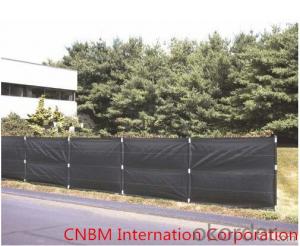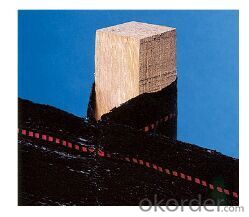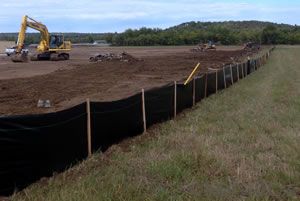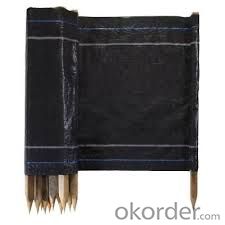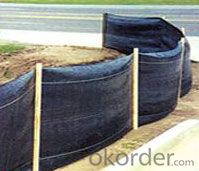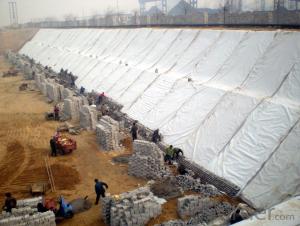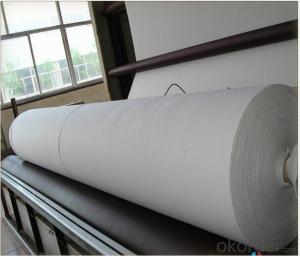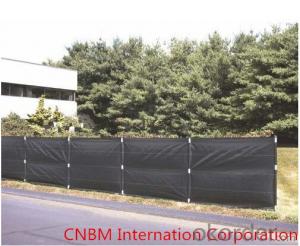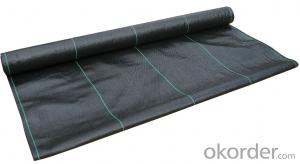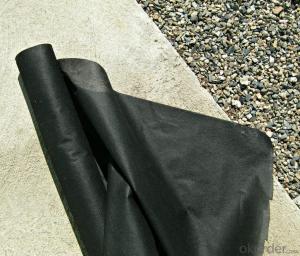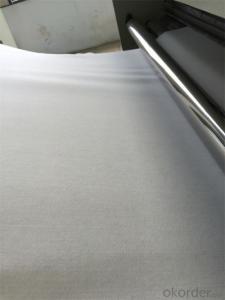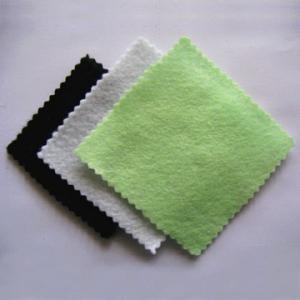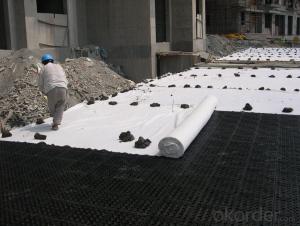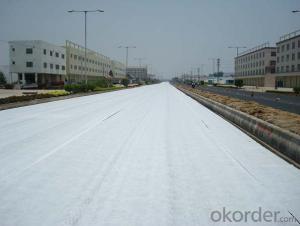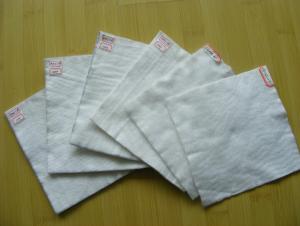Ag200 PP Woven Geotextile/Landscape Fabric with 100g
- Loading Port:
- Qingdao
- Payment Terms:
- TT OR LC
- Min Order Qty:
- 5000 m²
- Supply Capability:
- 1000000 m²/month
OKorder Service Pledge
OKorder Financial Service
You Might Also Like
Product Description:
1.Landscape Fabric Description:
Landscape fabric, also referred to as a filter fence, is a structure composed primarily of geotechnical fabric and that is used as a form of sediment control.These temporary barriers are relatively low in cost, especially when compared to the damages they can prevent.
2. Landscape Fabric Functions and Features:
1)Excellent weed control
2)Excellent UV resistance
3)Moisture,fertilizers,air reach plants to allow for healthy soil
4)Good water and air permeability
5)Exceptional toughness and strength
6)Durable,tear-resistant,anti-rot and anti-mildew
7)Light weight,easy to install,follows natural ground contours
3. Weed Barrier Fabric Function:
1. Cover crops in the ground surface,prevent weeds and against the insect
2. Controlling soil humidity and the temperature
3. Does not affect the growth of the crops
4. Protects plants from harmfully solar radiation
5. Air permeability, water permeability help crops growth.
6. Mothproof, eco-friendly, breathable, anti-bacteria, tear-resistant, fusible

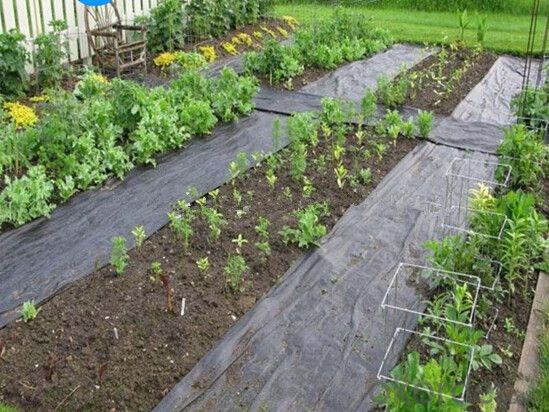
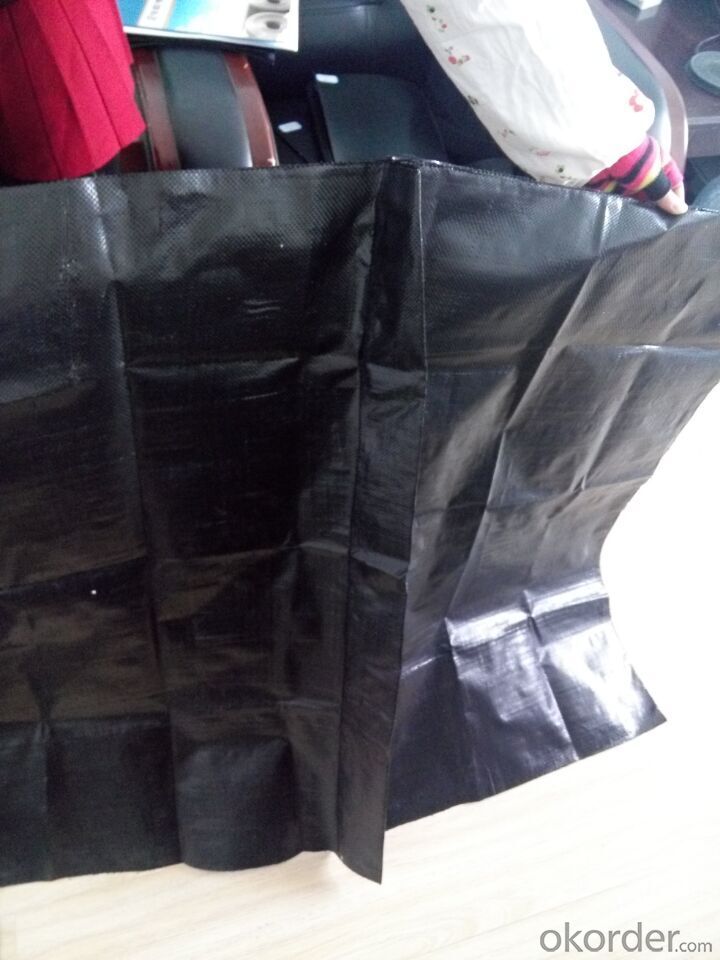
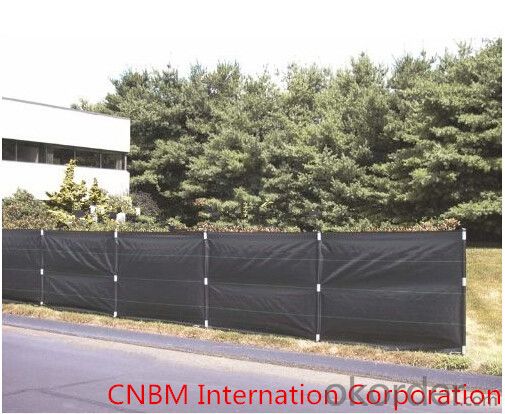
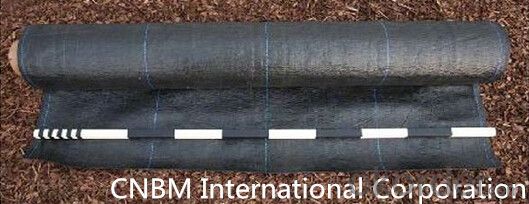
3.. FAQ:
Q1: What is your minimum order quantity?
A:The minimum order quantity is 5000 ,but it is negotiable.
Q2:What is your payment terms?
A: T/T,Western Union,Paypal,L/C...
Q3:What is your delivery time?
A:Production time usually costs 2-20 days.
Waiting to cooperate with you!
- Q: How do geotextiles help in reducing the risk of landslides?
- Geotextiles help in reducing the risk of landslides by providing reinforcement and stabilization to soil slopes. They are placed within the ground to act as a barrier, preventing the movement of soil and reducing erosion. Geotextiles also improve drainage and promote the proper flow of water, reducing the build-up of excess moisture that can contribute to landslides. Overall, geotextiles play a crucial role in enhancing the stability and resilience of slopes, mitigating the risk of landslides.
- Q: Where is the non-woven geotextile in the tunnel?
- Second lining the construction of the use of civil engineering materials to answer manufacturers
- Q: How do geotextiles affect wildlife habitats?
- Geotextiles can have both positive and negative effects on wildlife habitats. On one hand, they can be used to protect and restore ecosystems by preventing soil erosion, stabilizing slopes, and controlling sedimentation. This can create favorable conditions for wildlife by preserving natural habitats and preventing habitat loss. On the other hand, improper installation or use of geotextiles can disrupt natural processes, such as water flow, and alter the composition of habitats. Therefore, it is crucial to consider the specific application and environmental context when assessing the impact of geotextiles on wildlife habitats.
- Q: Filament, preferably concrete construction
- Tianhai new material filament geotextile case analysis of water conservancy projects: seawall, river embankment, lake embankment project; reservoir reinforcement project; reclamation project; flood control and rescue. Highway and railway engineering: soft foundation reinforcement treatment; slope protection; road anti-reflective crack structure layer; drainage system; green isolation zone. Electrical engineering: nuclear power plant basic engineering; thermal ash dam project; hydropower project.
- Q: How do geotextiles help with soil separation in subgrade improvement projects?
- Geotextiles are used in subgrade improvement projects to separate different soil layers, preventing them from mixing. They act as a barrier, allowing water to pass through while preventing the migration of fine particles. This helps to maintain the stability and strength of the subgrade, reducing the risk of settlement and soil erosion.
- Q: How do geotextiles contribute to pavement performance?
- Geotextiles contribute to pavement performance by improving the overall strength and durability of the pavement. They act as a reinforcement layer, preventing the migration of fine particles and providing separation between the subgrade and base layers. This helps to distribute the load evenly, reduce pavement deformation, and increase its resistance to cracking and rutting. Additionally, geotextiles can enhance drainage and reduce water infiltration, preventing moisture-related issues such as frost heave or base erosion. Overall, geotextiles play a crucial role in enhancing the longevity and performance of pavements.
- Q: What are the different geotextile testing parameters?
- Some different geotextile testing parameters include tensile strength, puncture resistance, burst strength, permittivity, apparent opening size, and UV resistance.
- Q: Composite geotextile 20-500-0.5 what it means
- You should not write it right
- Q: How do geotextiles contribute to soil stabilization in mining areas?
- Geotextiles contribute to soil stabilization in mining areas by providing reinforcement and preventing erosion. These synthetic materials are placed within the soil to enhance its strength and stability, reducing the risk of landslides and soil disturbances. Geotextiles also act as a barrier, preventing the migration of fine particles, thereby improving soil filtration and preventing contamination of nearby water bodies.
- Q: Geotextile construction inspection batch ye do?
- Willing to smash the acceptance of smashing acceptance in vain
Send your message to us
Ag200 PP Woven Geotextile/Landscape Fabric with 100g
- Loading Port:
- Qingdao
- Payment Terms:
- TT OR LC
- Min Order Qty:
- 5000 m²
- Supply Capability:
- 1000000 m²/month
OKorder Service Pledge
OKorder Financial Service
Similar products
Hot products
Hot Searches
Related keywords
